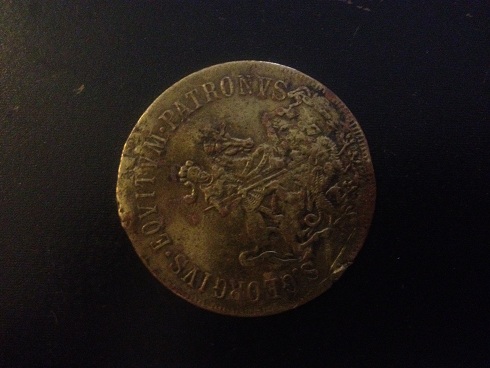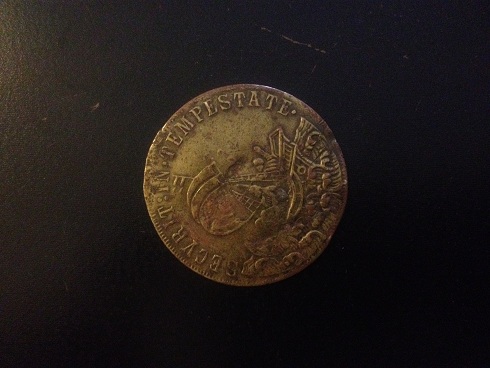This is usually called a seaman's or fisherman's charm
Obverse:
St. George, mounted, slaying dragon
Around which:
St. GEORGIUS EQUITUM PATRONUS
(St. George Patron Saint of Knights)
Reverse:
A storm tossed ship containing a sleeping Christ
and two frightened Apostles
Around which:
INTEMPESTATE SECURITAS
(Safety in the storm)
You can read all sorts of nonsense about these on
ebay. Here's the true story:
The obverse comes from a coin called a Mansfeld thaler. First minted in 1521, it was commissioned by a
Count vonMansfeld
and honoured his family's patron saint. The von Mansfeld family trade was warfare and his symbol was adopted for luck by his mercenary troops.
Skipping forward a century or so and the thaler had been replaced by a charm or amulet bearing St George but now with the addition of Christ on the reverse.
This design is generally credited to a Hungarian engraver, Christian Hermann Roth and, with modifications, has been in continuous production ever since.
Even resources like the British Museum get this one wildly wrong.




















